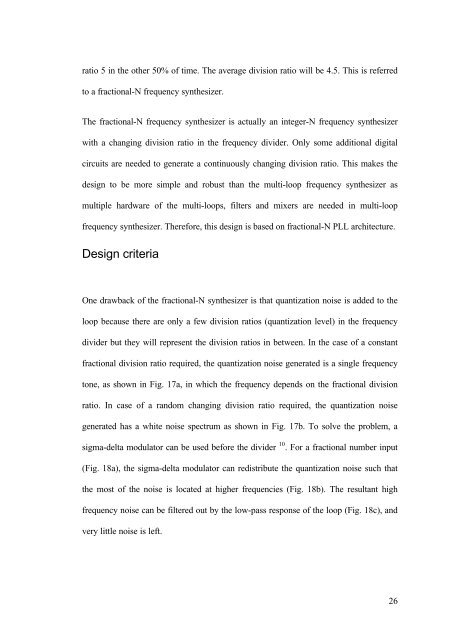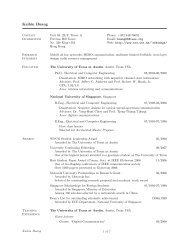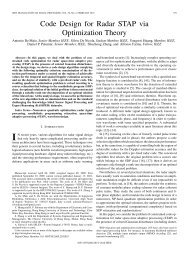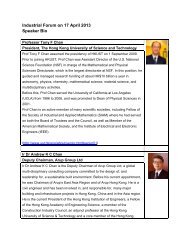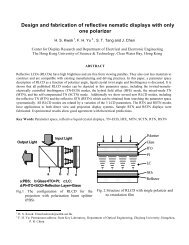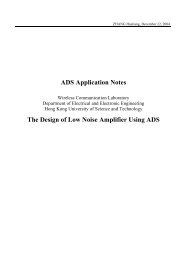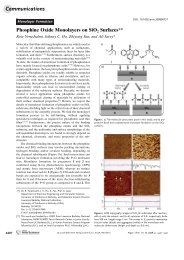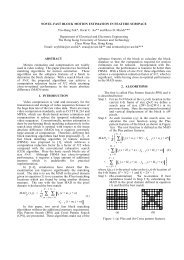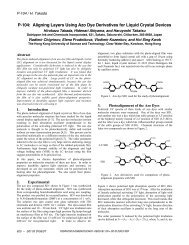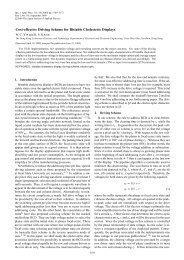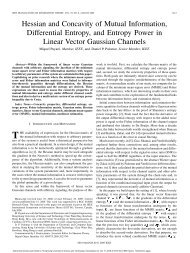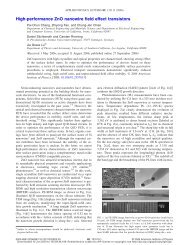MPhil thesis of Lo Chi Wa - Department of Electronic & Computer ...
MPhil thesis of Lo Chi Wa - Department of Electronic & Computer ...
MPhil thesis of Lo Chi Wa - Department of Electronic & Computer ...
You also want an ePaper? Increase the reach of your titles
YUMPU automatically turns print PDFs into web optimized ePapers that Google loves.
atio 5 in the other 50% <strong>of</strong> time. The average division ratio will be 4.5. This is referredto a fractional-N frequency synthesizer.The fractional-N frequency synthesizer is actually an integer-N frequency synthesizerwith a changing division ratio in the frequency divider. Only some additional digitalcircuits are needed to generate a continuously changing division ratio. This makes thedesign to be more simple and robust than the multi-loop frequency synthesizer asmultiple hardware <strong>of</strong> the multi-loops, filters and mixers are needed in multi-loopfrequency synthesizer. Therefore, this design is based on fractional-N PLL architecture.Design criteriaOne drawback <strong>of</strong> the fractional-N synthesizer is that quantization noise is added to theloop because there are only a few division ratios (quantization level) in the frequencydivider but they will represent the division ratios in between. In the case <strong>of</strong> a constantfractional division ratio required, the quantization noise generated is a single frequencytone, as shown in Fig. 17a, in which the frequency depends on the fractional divisionratio. In case <strong>of</strong> a random changing division ratio required, the quantization noisegenerated has a white noise spectrum as shown in Fig. 17b. To solve the problem, asigma-delta modulator can be used before the divider 10 . For a fractional number input(Fig. 18a), the sigma-delta modulator can redistribute the quantization noise such thatthe most <strong>of</strong> the noise is located at higher frequencies (Fig. 18b). The resultant highfrequency noise can be filtered out by the low-pass response <strong>of</strong> the loop (Fig. 18c), andvery little noise is left.26


